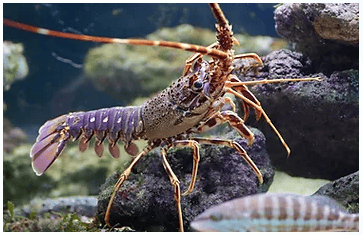
AQUACULTURE
ULTRASONIC CYANOBACTERIA CONTROL & PBE FOR ORGANIC WASTE CLEANUP
AQUACULTURE
ULTRASONIC CYANOBACTERIA CONTROL
& PBE FOR ORGANIC WASTE CLEANUP
Sonic Bloom: Ultrasound Technology Tackles Toxic Algae, Boosting Aquaculture.
Toxic algal blooms, those vibrant yet deadly explosions of microorganisms, pose a significant threat to aquatic ecosystems and the burgeoning aquaculture industry.
These blooms can decimate fish populations, contaminate shellfish, and disrupt entire ecosystems, resulting in substantial economic losses and environmental damage. However, a promising solution is emerging from the depths of technological innovation with the use of Pulsar technology proving to decimate cyanobacteria population, while being safe for fish and making way for other dominant and beneficial species.
This technology utilizes 4400+ accurately targeted high-frequency sound waves to disrupt the cellular integrity of algae, effectively killing them without resorting to harsh chemicals. Here's how it works and its potential to revolutionize aquaculture:
- Selective Targeting: With 4400+ pinpoint accurate frequencies being repeated continuously the Pulsar family is a must when it comes to both treatment and future defence against all unwanted species, safeguarding you from species you may not have experienced yet.
- Reduced Mortality: By eliminating toxic algae, ultrasound technology significantly reduces fish and shellfish mortality rates, leading to increased yields and profitability for aquaculture farmers.
- Improved Water Quality: Ultrasound treatment reduces the production of toxins and organic matter associated with algal blooms, resulting in cleaner and healthier water for aquatic organisms.
- Reduced Chemical Usage: Traditional treatments often involve the use of copper sulfate or other chemicals, which can have detrimental effects on the environment, Ultrasound offers a cost effective and environmentally friendly alternative.
The importance of oxygen in
PBE BLOCK PLACEMENT
AP+CB Block delivering the same probiotic without the water clarity
AP+CB Block delivering the same probiotic without the water clarity

Our continual studies in aquaculture are showing a pattern where the same beneficial bacterial species which are capable of living in aerobic or anaerobic environments, delivering two completely different outcomes in these areas for your crop health. The other area of interest is the importance of not clearing the water in aquaculture ponds.
Bacillus Species in an aerobic environment, produce enzymes that are highly beneficial to gut health in crustaceans and fish species, with results continually showing increased crop survival and size. This is also being shown to heavily reduce bacterial disease species within the aquatic environment, consequently dramatically improving the health of the aquatic crop.
Bacillus species in an anaerobic environment are producing enzymes which see a dramatic reduction in feed uptake showing a reduction in gut health. This can be seen dramatically on harvest where there is low crop yield with dramatic size differences within the end crop production, with a large amount of runts. There is also no evidence of bacterial disease reduction.
This has become evident with the use of PBE (Prebiotic Bacteria Enhancer) sinking blocks in aquatic crops where the ponds or dams are less than 3 foot deep, where it is a continual aerobic environment delivering continual outstanding results. Ponds or dams over 3 foot deep become quite anaerobic with the same PBE sinking blocks not delivering any desirable outcomes. We are understanding that these ponds need to maintain turbidity as most farmed species do not like clear water. From these results we developed a new formula for aquaculture PBE - AP+CB, Probiotic Culture Block for Aquaculture. PBE - AP+CB elements are designed to deliver the same probiotic bacteria without delivering the clarity to the water. These have been designed to sink for shallow water aquaculture ponds and a floating bent block which enhances aerobic enzyme production in deeper ponds. The curve in this bent block radiates the sun’s heat through the top surface, resulting in beneficial bacterial groups increasing their enzyme production.
PBE - AP+CB floating bent block has been placed in aquaculture ponds with an average depth of 8 to 10 feet, which resulted in maintaining an aerobic environment with increased probiotic enzyme production. We have now been able to deliver the same outstanding results as we have delivered with shallow water aquatic crops.


